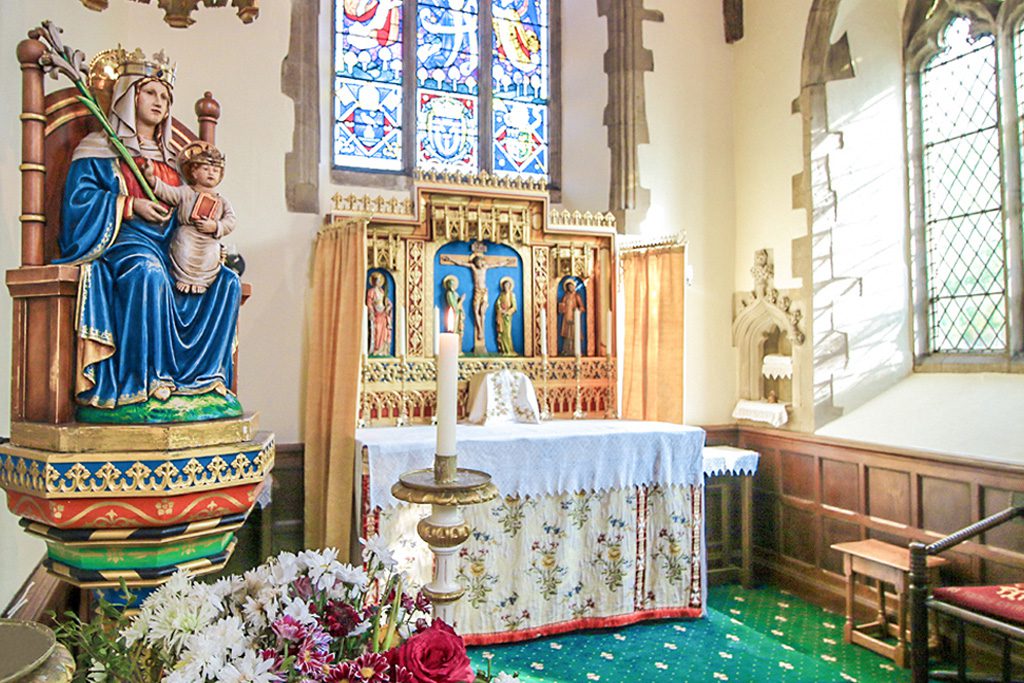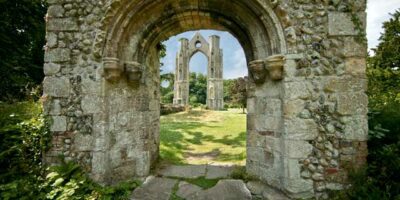Today is the first occasion on which Our Lady of Walsingham will be honoured as a Feast rather than just as a Commemoration in the OF Calendar. The new ranking was granted earlier this year and given not only the historic importance of the Shrine but also the remarkable flowering of devotion in the past hundred or so years, first at the Anglican shrine and then at the Catholic one, now elevated to the status of a Minor Basilica.

The Catholic Shrine in the restored fourteenth century Slipper Chapel established in 1934 and now the National Shrine
Image:christtheking.notts.sch.uk
Our knowledge about the origin of the Shrine derives from a unique copy of one source. That is, of course, the so called Pynson Ballade. Written, it is thought, about 1460 it was printed in 1495 by Richard Pynson. The sole surviving copy is in that wonderful collection of early ephemera, the Pepys Library at Magdalen College in Cambridge.
The original text of the Ballad, together with a glossary, can be found on the excellent Archives website of the Anglican Shrine ( www. walsinghamanglicanmedieval.co.uk ) at pynson

The view from the springs towards the eventual site of the Holy House. which was to the right of the priory church
Image: christtheking.notts.sch.uk.
The reference to the carpenters building the Holy House links well to the archaeological evidence. When the eventual site was excavated it was shown to have been built of split tree trunks like the surviving example at Greensted Church in Essex. That timber Holy House survived until the destruction of the Shrine, enclosed by a late medieval building which functioned rather like a cloister.
It was in that form at the Shrine appeared in 1513 to Erasmus who wrote: When you look in you would say it is the abode of saints, so brilliantly does it shine on all sides with gems, gold and silver… Our Lady stands in the dark at the right side of the altar… a little image, remarkable neither for its size, material or workmanship.
I In particular may I wish a holy and happy feast day to all my fellow pilgrims over the years to England’s Nazareth.
May Our Lady of Walsingham pray for England her Dowry and for us all


No comments:
Post a Comment